- 1. The Foundation of Classic Style in Interior Design
- 2. Rules for decorating an interior in the classic style:
- 3. Classic Color Palette
- 4. The Center of Composition and Symmetry
- 5. Light, Lots of Light
- 6. Furniture as a Work of Art
- 7. The Principles of Decorating a Living Room in the Classic Style
- 8. Classic Interior in the Bedroom
- 9. Classic Style Kitchen
- 10. Office Decoration
- 11. Classic-style bathroom
- 12. Myths about the classic interior
Classical style in interior design is like wine – it becomes more valuable with age, and despite the fleeting nature of trends in the world of design, it remains in demand. Always.
The Foundation of Classic Style in Interior Design
The foundation of the classic style in interior design was formed in the 16th-18th centuries, the era of palace luxury. It is based on elements of classicism, baroque, rococo, and empire styles. Modern classic interior design combines accepted canons, characterized by strictness, elegance, and, most importantly, functionality, making it much more practical for modern living.
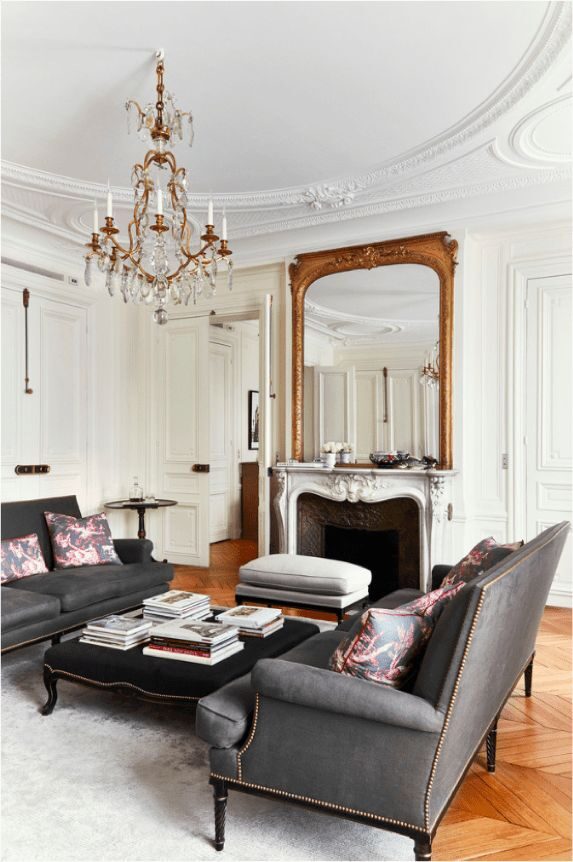
Rules for decorating an interior in the classic style:
- Natural materials for finishing and decor.
- Flooring made of valuable wood species: solid, parquet, or artistic parquet, solid or engineered board.
- Stone tiles: we prefer marble made according to traditional methods.
- If you are lucky enough to have original molding on the ceiling, try to preserve it. For low ceilings, just decorate the walls with cornices (preferably made of plaster).
- For wall finishing, choose paint with a matte finish, decorative plaster, or wallpaper with a subtle pattern, fabric, or silk.
Classic Color Palette
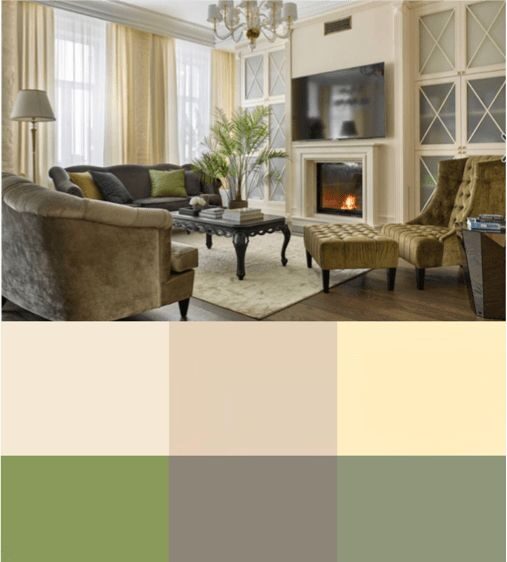
Pastel shades: white, shades of gray, and versatile beige.
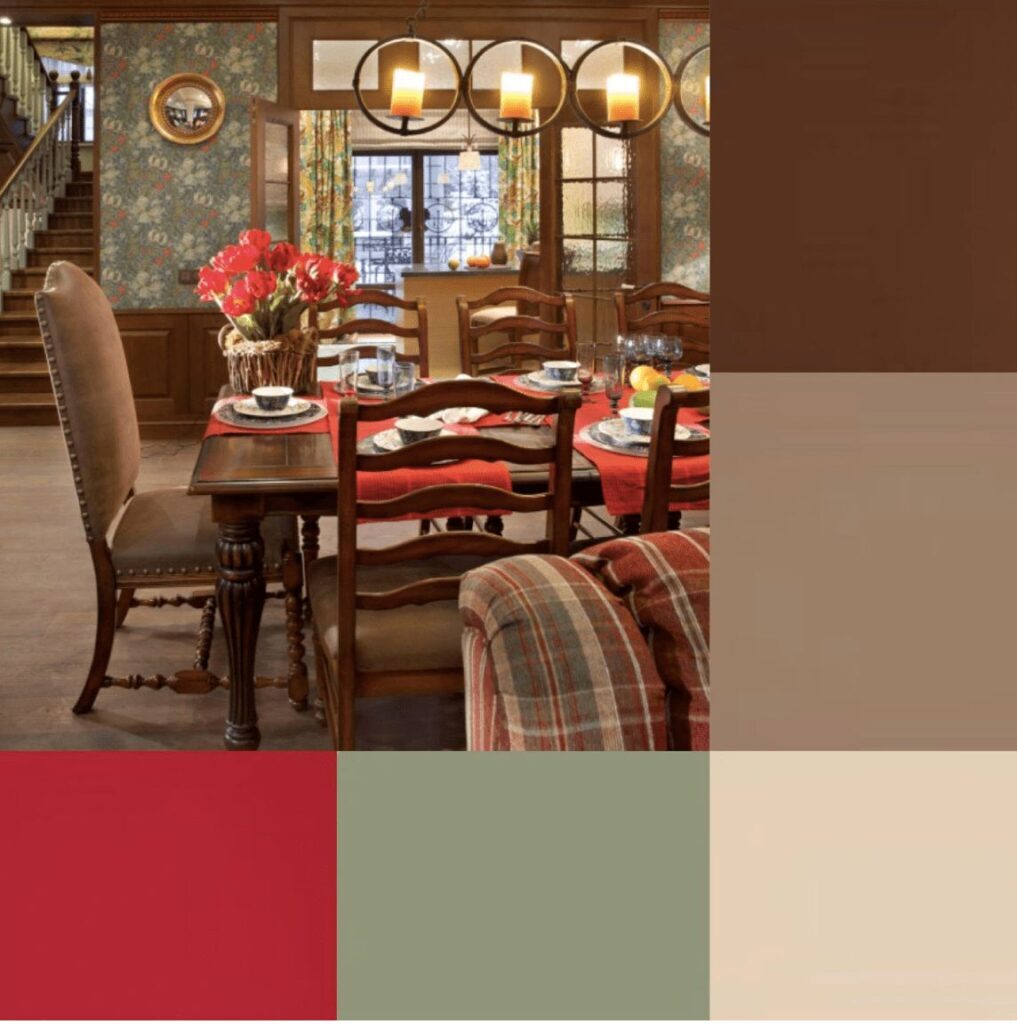
Dense and noble shades of burgundy, brown, purple, coral, and olive as accents.

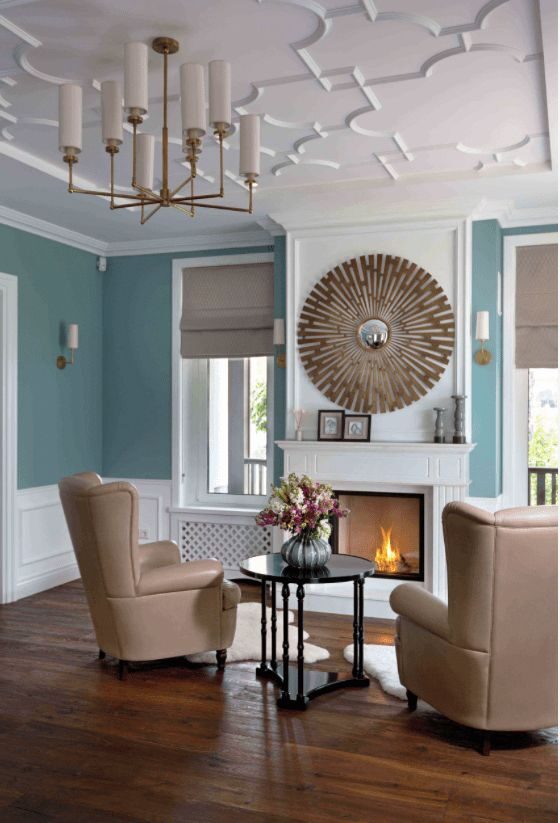
The Center of Composition and Symmetry
In classical interior design, the composition is built around coordinating centers. This can be a fireplace, a dining table, a luxurious sofa, or an antique chest of drawers. Furniture is arranged around the center, and decorative objects or wall sconces are placed symmetrically.
Classical style is all about proportionality. Therefore, if you visually divide the room into two parts from the composition center, the objects mirror each other – matching armchairs, chandeliers, vases, and so on.
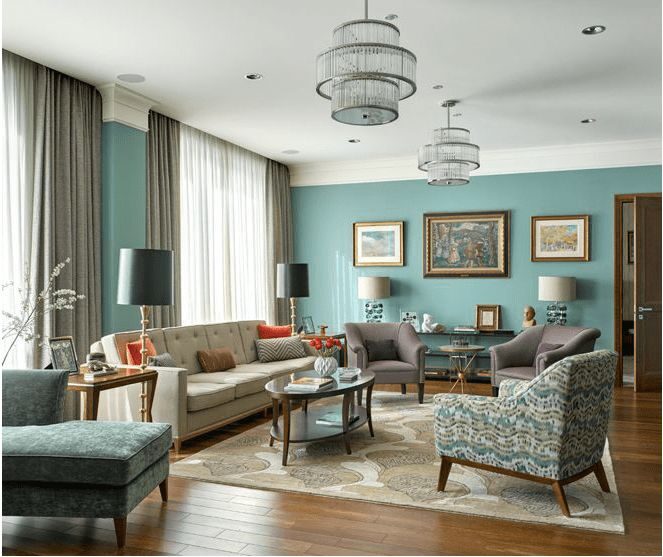
Light, Lots of Light
Historically, in classic interiors, the source of light was large windows and huge chandeliers. The times of luxurious halls have passed, the architectural features of residential buildings have changed, and now few can boast of either.
The modern lighting scenario in the classic style:
- A central chandelier adorned with crystals
- Floor lamps on either side of the sofa
- Table lamps and sconces
- Candles in candlesticks.
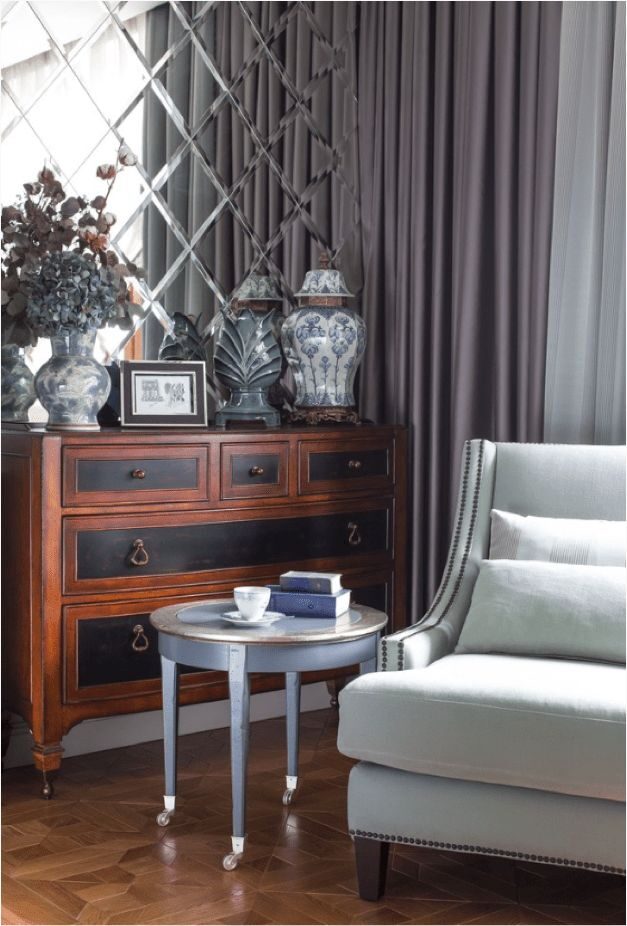
Furniture as a Work of Art
Pay special attention to the furniture – it will enhance the luxury and nobility of the interior. A dresser made of precious wood, upholstered in leather or expensive fabric, antique or distressed coffee table – all of these will emphasize the status of the apartment owners (another task of classic style, which has historically developed). In this story, it is better to consult a specialist – an antique dealer or decorator – in order not to get confused in styles or buy a fake.
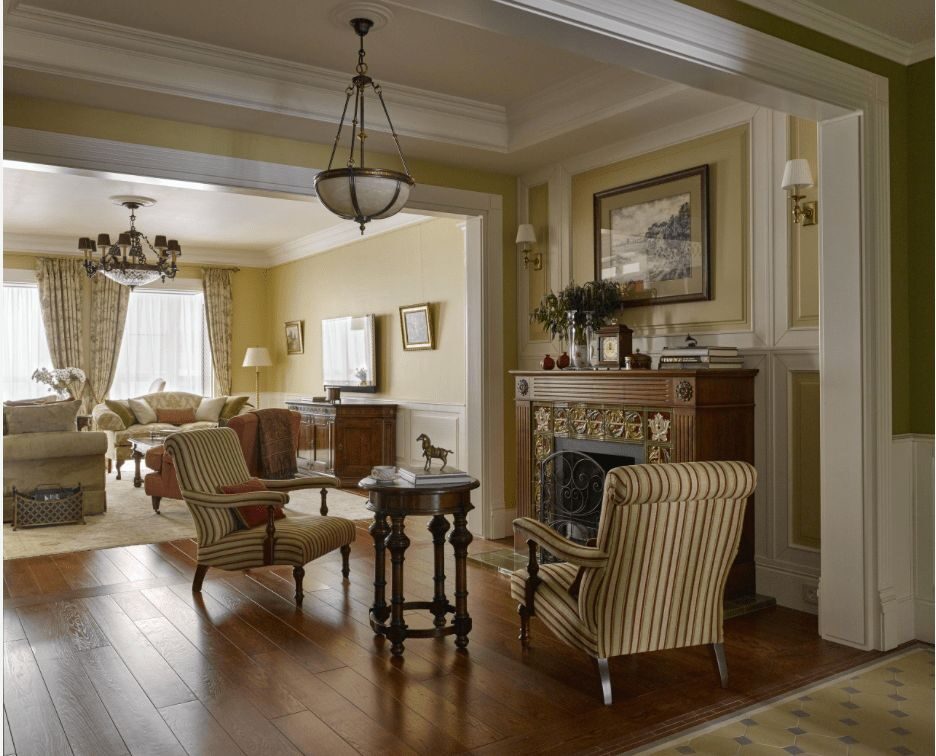
The Principles of Decorating a Living Room in the Classic Style
In a classic interior, the living room plays the role of a ceremonial room – a place to receive important guests or spend warm family evenings.
- The Proper Room Shape and a relatively large area. If there is an opportunity to expand the space by annexing a room, take advantage of it. This does not apply to the kitchen or balcony. Unfortunately, the classic living room presupposes traditional planning.
- Zoning of the living room with furniture. We talked about coordinating centers. There may be several of them. For example, a sofa and armchairs around the fireplace, and a dining group next to the chest of drawers.
- Dominance of light shades and adherence to the color scheme of the entire apartment. This rule applies to all classics, except for national ones.
- Don’t forget about the principle of symmetry!

Classic Interior in the Bedroom
A large bed with a decorative headboard is the centerpiece of the classic-style bedroom. It is complemented by bedside tables, a dressing table, a sleek chest of drawers, and a bench. Choose furniture in a consistent style to maintain harmony in the bedroom. And, of course, observe symmetry.
When choosing fabric elements for decor and interior, give preference to high-quality and textured textiles, opt for flowing silk or soft-to-the-touch velvet in a unified color scheme.
Create two lighting scenarios – a chandelier as the main source of light and sconces or table lamps as local lighting.
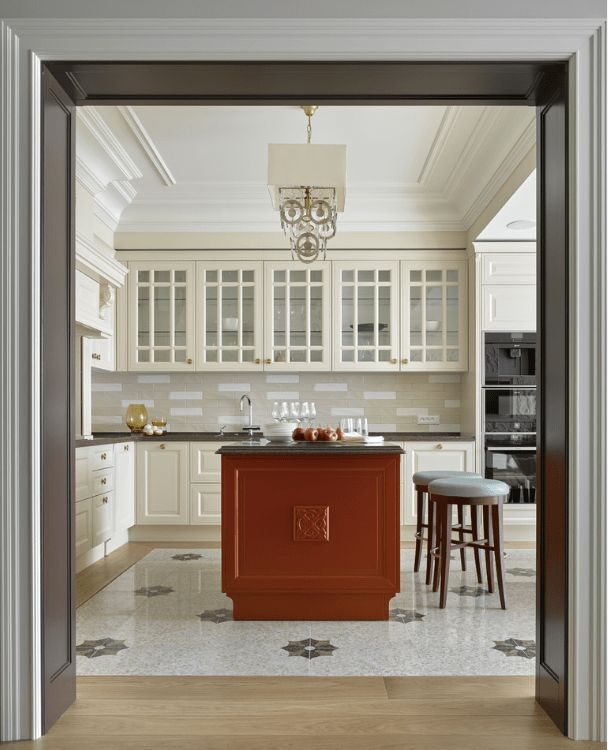
Classic Style Kitchen
Two important tasks: creating a noble canonical interior while preserving functionality.
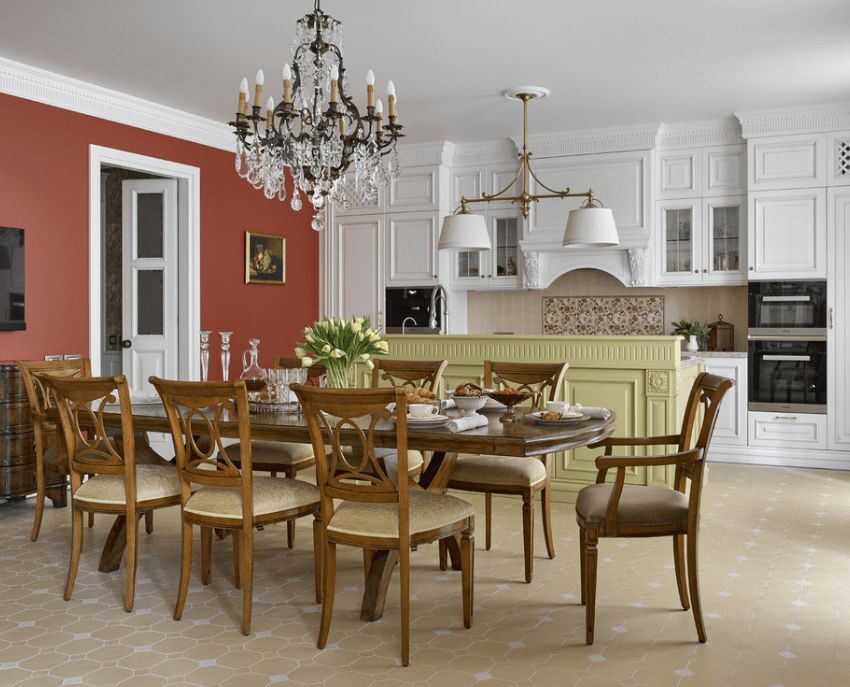
The kitchen furniture is usually made of hardwood (oak or cherry), and the countertop is made of stone. In the center of the room, there is a kitchen island that separates the dining area into a separate functional zone (if the space allows). Typically, the dining area is placed separately, again, if space permits.
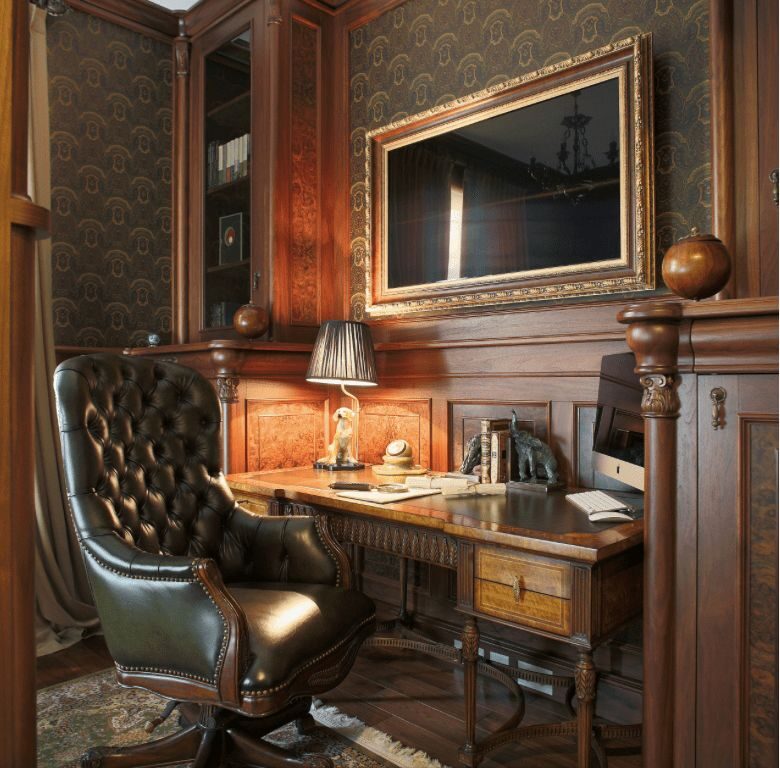
Office Decoration
The decor in a classic office is comfortable and suitable for complete immersion in the work process.

English classic is the most popular style for decorating a study, with dark tones dominating the room’s interior. If using wallpaper to decorate the walls, it’s best to use patterns like checks, stripes, or small ornaments.
And of course, what study would be complete without a massive work desk, soft leather furniture, and floor-to-ceiling bookshelves.

Classic-style bathroom
The smallest room in terms of area is the bathroom, but even when decorating it, follow the basic principles of the classic style:
- Choose natural stone, marble or ceramic tiles with textures and patterns that imitate natural materials for the walls.
- Consider decorating the mirror. It visually expands the space of the room and can be an accent, especially when paired with a couple of elegant wall sconces.
- Prefer stylized plumbing fixtures.
Myths about the classic interior
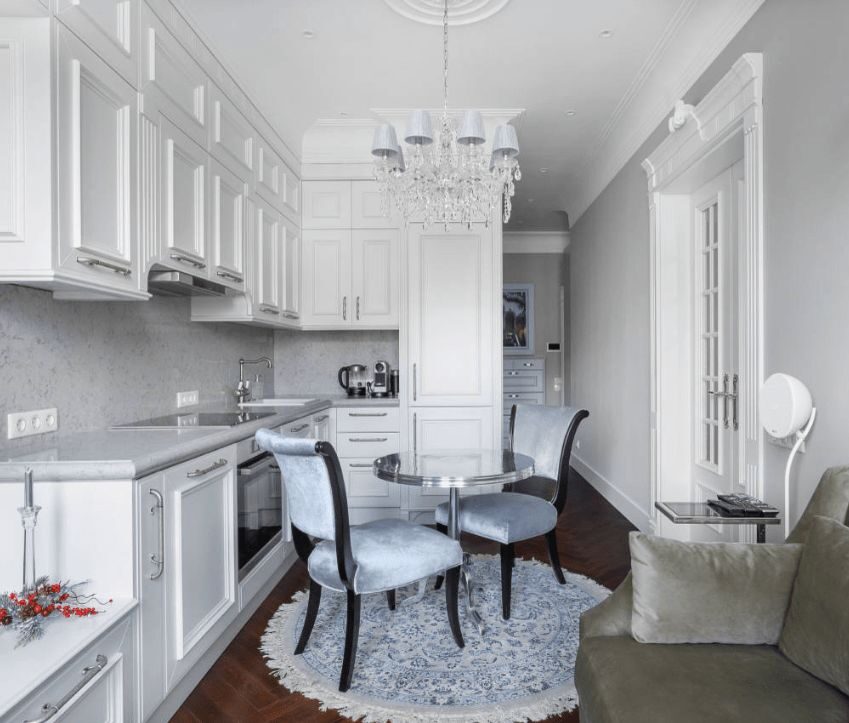
Myth #1 – Classic means extravagance
n reality, the interior in the classic style can be concise, calm, and strict. Only some decorative elements emphasize the prestige and high level of life of the apartment owner.
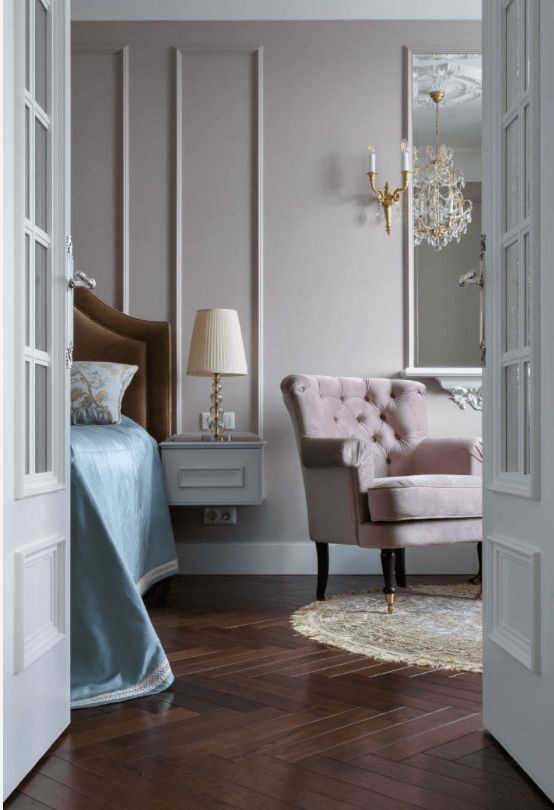
Myth #2 – Classic interior is only appropriate for large spaces
If the apartment is not spacious and doesn’t have high ceilings, it doesn’t mean that a classical interior is not suitable. You can always get inspired by a few design tricks and use them in any space.
Myth #3 – Classic interiors are chosen only by mature people
Although this is often the case, it does not mean that classic style is outdated, it is simply time-tested! A classic interior can suit both a family and a young woman. Classic style can have very different moods, from festive and carefree to impossible strictness. Just choose your own.
A classic interior does not need to be transformed and changed in pursuit of new design trends. The calm and noble atmosphere will not tire you and will never get boring. If desired, you can easily refresh the interior and mix classic elements with modern decor or furniture.
Classic style will outlast all trends.

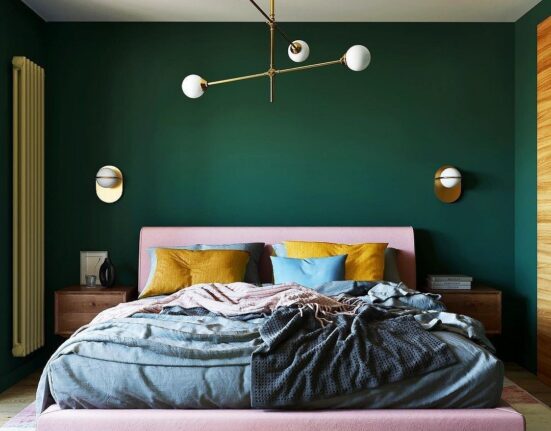

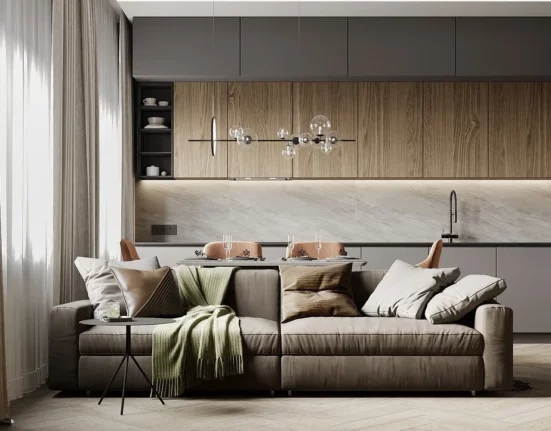
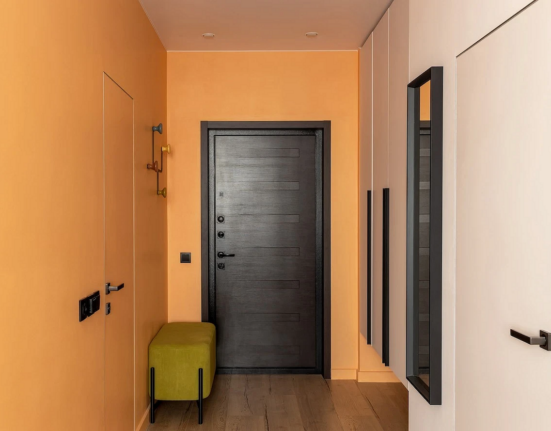

Leave feedback about this